By Daniel Benítez, Lidia Álvarez, Neemias Santos da Rosa and Margarita Díaz-Andreu
On 20 and 21 October 2022, the Artsoundscapes conference on ‘Past sounds: New perspectives in the field of archaeoacoustics’, organised by Margarita Díaz-Andreu and Neemias Santos da Rosa, was held in the vibrant city of Barcelona. Bringing together scholars and researchers from every corner of the world, the conference attracted experts in archaeology, physical acoustics, history, music, psychoacoustics, neuroacoustics and anthropology working around archaeoacoustics.
Figure 1. Conference banner
The conference hosted over 20 speakers organised in six different panels (see abstract book). The programme also included activities such as the visit to the University of Barcelona’s impressive ImmpaLab funded by the ERC Artsoundscapes project, and a sound tour through mediaeval and post-mediaeval Barcelona.
On the first day of the event, 20 October, the conference was held at the Faculty of Psychology, in the University of Barcelona’s Mundet campus, where some members of the Artsoundscapes project are based. After welcoming speakers and attendees to the conference, the principal investigator of the Artsoundscapes project, Margarita Díaz-Andreu, made a brief introduction. This was followed by the first section of the conference, dealing with ‘Psychoacoustics and neuroacoustical approaches in archaeology’. Researcher Pamela Jordan (University of Amsterdam) offered the first presentation entitled ‘Employing psychoacoustics in sensory archaeology’, which focused on developing a sensory approach to explore the sonic relationships between the ancient sanctuary to Zeus on Mount Lykaion and the landscape where it was located. She explained how a series of binaural recordings taken on-site had been used to determine the possible roles that sound may have played at the time.

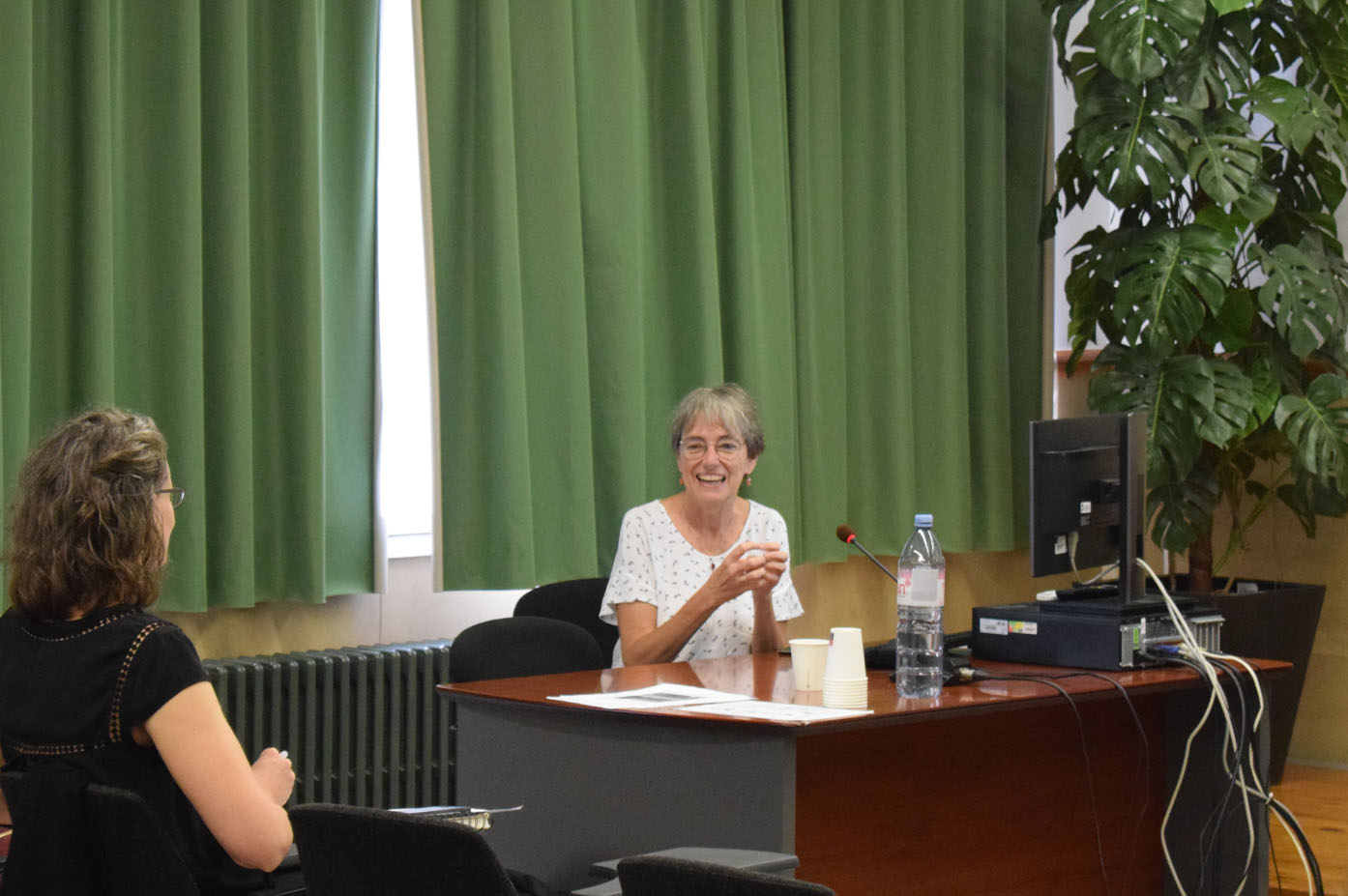


Figure 2. Upper row: Margarita Diaz-Andreu introducing the conference. Bottom row: Pamela Jordan during her presentation (left); coffee break (right)
After the coffee break, Artsoundscapes researchers from the project’s RL2 (psychoacoustics) and RL3 (neuropsychology) research lines delivered their presentations. The first one was by researcher Raquel Aparicio-Terrés and dealt with ‘the study of neural mechanisms that make acoustics a phenomenon to be considered in ancient human experience’. She offered insights into previous research on the cognitive effects of present-day ritualistic music, considering about methodology to be used in future scientific investigations on this topic. In turn, researcher Samantha López presented on ‘Methods for perceptual and emotional evaluation of soundscapes in immersive auditory environments’. She explained the procedure to gather impulse responses in order to generate auralisations of rock art sites with the aim of allowing listeners to have an immersive experience of the past soundscapes the project is working on. Both Aparicio-Terrés’ and López’s papers had also been written by others, including Artsoundscapes senior staff member, Carlos Escera.
The morning session finished with a visit to the University of Barcelona’s Immersive Psychoacoustic Laboratory (ImmpaLAB) and the Brainlab. Delegates had the opportunity to experience some of the applications of both facilities firsthand, including listening to high-order Ambisonic auralisations of rock art sites and their spatialised ambience recordings.



Figure 3. Clockwise, from top left: Raquel Aparicio-Terrés during her talk; Samantha López delivering her presentation; the group visits the ImmpaLAB
After the lunch break, the presentations dealt with the topic of ‘Musical instruments’. Simon Wyatt, an independent researcher from Edinburgh, offered a remote presentation entitled ‘Archoustemology and the Aurignacian’, which explored the acoustic nature of the Upper Palaeolithic aerophones from multiple perspectives with the aim of combining cultural, ritual, ecological, psychological and musical aspects of the past. After this presentation, Raquel Jiménez Pasalodos (University of Valladolid) talked about ‘The materiality of the immaterial: A theoretical approach to the study of archaeological musical instruments”’. She discussed a series of music archaeological methodologies applied to the study of sound-producing artefacts. These objects, she argued, reveal key aspects of disappeared musical cultures, including cultural practices, acoustic knowledge, performative techniques, cultural connections and music theories.
At the last part of the session, Neil Rusch (University of the Witwatersrand) revisited the concepts of ‘re-enactment’ and ‘actualization’ in his online presentation on ‘The results are audible: Constructing ancient instruments. What more can we learn?’. Rusch drew on his experiences while creating musical instruments for archaeoacoustic purposes. The paper that followed in the programme was by Francisca Zalaquett ( UNAM, National Autonomous University of Mexico). Her virtual presentation dealt with ‘Research on sound instruments in Maya Archaeology and the dissemination of results to the public’. She explained about the ‘Maya Sound Universe’ project, the analysis of the codes related to sound in Maya society, the study of epigraphy, iconography and sound objects recovered in excavations as sources to approach this topic. She also described how the project is analysing the different types of Maya musical instruments.
To close on a high note, Laura de Castellet (Universitat de Barcelona/APéMUTAM) gave a guest presentation on ‘Researching and performing on medieval music’. She shared an insight into the sound landscape of mediaeval Catalonia, including a fantastic demonstration of how mediaeval sound objects and instruments worked. Attendees delighted in hearing, touching and smelling the many reproductions of sound objects she brought. She explained about the musical and acoustic behaviour of each of them, along with her work in experimental archaeology to reconstruct some of the sound objects found in excavations. Sound mapping, she showed, demonstrated in how in the Middle Ages horns and cornets allowed alerts to be communicated quickly and easily to everybody living in a potentially dangerous area, such as the border area between Al-Andalus and the Christian territory.


Figure 4. Raquel Jiménez Pasalodos giving her presentation (left); Laura de Castellet playing a reproduction of a medieval instrument (right)
The second day of the conference, 21 October, was held in the Faculty of Geography and History of the University of Barcelona, where most of the Artsoundscapes team is based. The first paper dealt with archaeoacoustics and ontology and was entitled ‘The role of listening in the prehistoric emergence of speech and song: A precursor of becoming human?’. In this presentation, Bernd Brabec de Mori (University of Innsbruck/University of Marburg) started by defining what language, music and listening are. After an overview of the origin theories of speech and song, he explained about indexical, structural and enchanted listening, the last one being the only one exclusive to humans.
The two papers in the section on ‘Archaeoacoustics, storytelling and shamanism’ started with the presentation by archaeologist and Artsoundscapes PI, Margarita Díaz-Andreu, and the main acoustic engineer of the project, Lidia Álvarez Morales, of a paper that was also written by Neemias Santos da Rosa, Daniel Benítez and others. In their talk, ‘Music and storytelling in rock art sites? The archaeoacoustics of the Urkosh area’, some of the results from the project’s acoustics fieldwork were presented. The talk explored the potential of archaeoacoustics for understanding past communities in Altai, along with the experimental methodology the project uses to assess the acoustic conditions in which intangible cultural practices related to storytelling and music were most likely produced in this area of Siberia. This presentation was followed with a paper by Riitta Rainio (University of Helsinki) and Elina Hytönen-Ng (University of Turku) on ‘Ringing tone and drumming shamans in the crevice cave of Pirunkirkko, Eastern Finland’. Rainio explained how in the past sound was used to contact the spirit world the cave being used by so-called ‘sages’. The ritual role of the cavity continues today with its use by shamanic practitioners. On the basis of her acoustic study of the site, she proposed that the acoustics – and especially the resonance – created by the parallel walls of the narrow crevice could have influenced and powered the sonic dimension of the rituals that took place in the site. Ethnographic research undertaken by Hytönen-Ng, however, found that resonance was not mentioned by current practitioners. Instead, internal sensations and the balancing energy of the place were mentioned. The presenters concluded that the acoustics of the place are identified with alternative inter-sensory experiences.

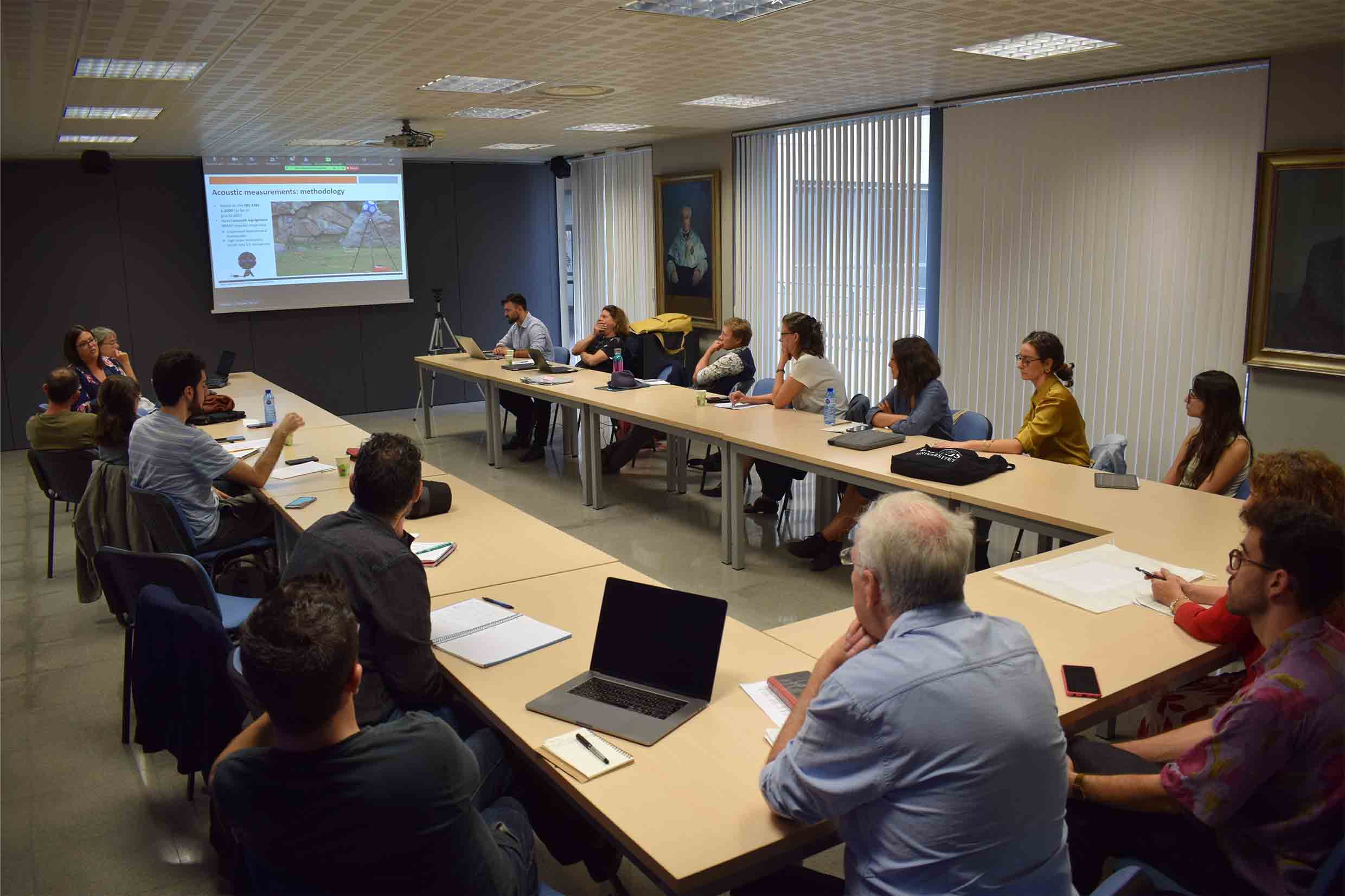

Figure 5. Bernd Brabec de Mori, Lidia Álvarez and Margarita Díaz-Andreu, and Riitta Rainio during their presentations.
After a coffee break, another set of papers dealt with the topic of ‘Architectural archaeoacoustics’. Angela Bellia (Italian National Research Council) presented on ‘Listening to ancient places: Towards an aural architecture of the past’. She brought up studies which have recently raised new hypotheses about aural architecture, presenting it as a new trend in humanities research, with a particular focus on the intersection of rituals, sacred spaces and sound in the past. This paper was followed by a virtual presentation by Davide Nadali (Sapienza University of Rome), who talked about ‘How to hear architecture. On the acoustic properties and implications of built spaces in ancient Mesopotamia’. The speaker analysed Mesopotamian built spaces from a phenomenological and acoustic perspective. In turn, Zorana Đorđević (University of Belgrade) spoke about ‘Sound imagery in medieval Serbian churches’, providing an overview of the themes that could be considered sound imagery and thus a basis for further archaeoacoustic analysis.


Figure 6. Angela Bellia (left) and Zorana Djordjevic (right) during their presentations
Researcher Braxton Boren (American University of Washington DC) gave a remote presentation about ‘Estimation of speech intelligibility in the past’ by means of acoustic simulations. The ‘Architectural archaeoacoustics’ section closed with the paper ‘One, two, three! Can everybody hear me? Acoustics of Roman “contiones”. Case studies of the Capitoline Hill and the temple of Bellona in Rome’ by four authors and presented by Kamil Kopij (Jagiellonian University). In his presentation, Kopij explained the simulations made to calculate the maximum size of the audience who could intelligibly hear a speech from two prominent speaking platforms in the city of Rome.

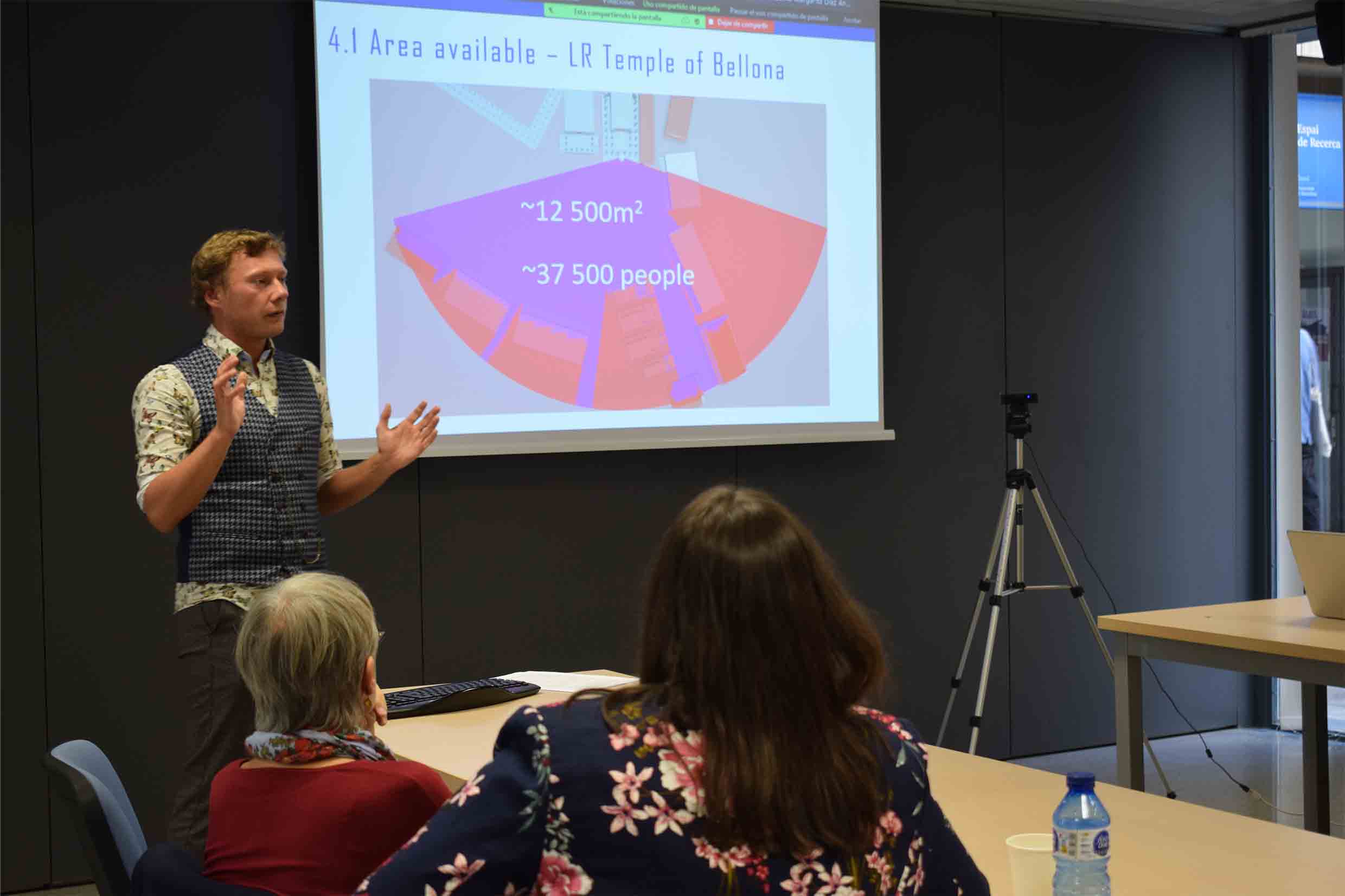
Figure 7. Braxton Boren (left) and Kamil Kopij (right) during their presentations
Finally, the last section of the conference revolved around ‘Virtual acoustics’. Cristina Manzetti (University of Cyprus) started it with her presentation on ‘Virtual acoustics and 3D GIS in archaeology’, in which she argued that virtual acoustics analysis can be integrated into 3D GIS in order to enhance the study of ancient theatres and the dissemination of the results. She illustrated her proposal with the case study of the Roman theatre at Kazinedes (Gortyna, Crete). Following her, the next talk was about ‘Presenting archaeoacoustics: Results using multimedia and VR technologies’. In this paper, Rupert Till (University of Huddersfield) reflected on how digital multimedia technologies are used to approach the acoustics of the past. He also showed an immersive application based on VR headsets used to explore history with school groups.

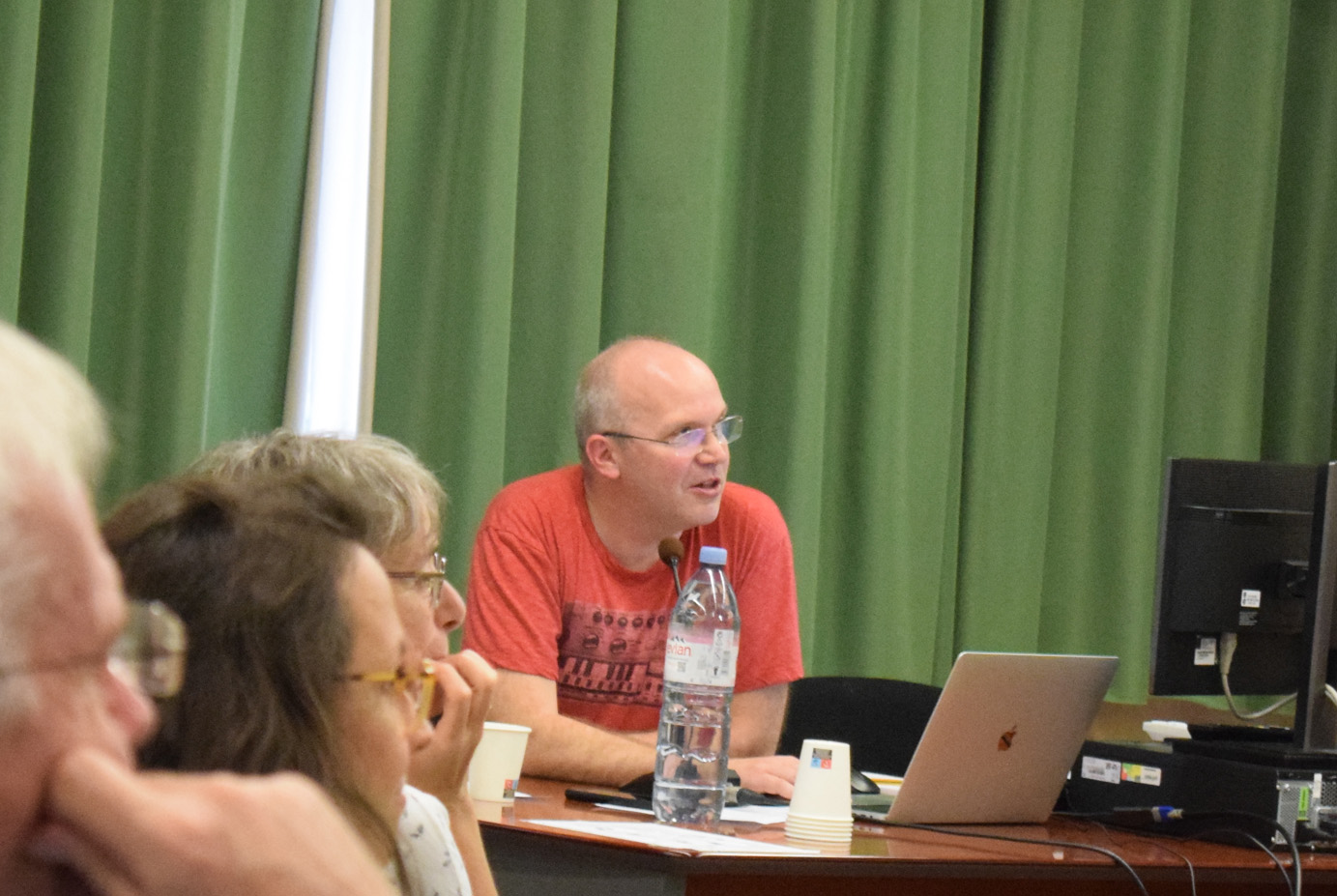

Figure 8. Upper row: Cristina Manzetti (left) and Rupert Till (right) during their presentations. Lower row: Diego Moreno trying Rupert Till’s VR application with the VR headset
Finally, the last section of the conference revolved around ‘Virtual acoustics’. Cristina Manzetti (University of Cyprus) started it with her presentation on ‘Virtual acoustics and 3D GIS in archaeology’, in which she argued that virtual acoustics analysis can be integrated into 3D GIS in order to enhance the study of ancient theatres and the dissemination of the results. She illustrated her proposal with the case study of the Roman theatre at Kazinedes (Gortyna, Crete). Following her, the next talk was about ‘Presenting archaeoacoustics: Results using multimedia and VR technologies’. In this paper, Rupert Till (University of Huddersfield) reflected on how digital multimedia technologies are used to approach the acoustics of the past. He also showed an immersive application based on VR headsets used to explore history with school groups.
The event concluded with a persuasive paper by Tess Knighton (ICREA, Autonomous University of Barcelona) on music in the court environment and daily musical life and urban ceremonial in Spain from about 1450 to the beginning of the seventeenth century. After her presentation, the attendees followed her on a pleasant ‘sound walk’ around the Raval neighbourhood and Gothic Quarter, including some of its iconic places such as the Library of Catalunya, the former church of La Capella and the Santa Maria del Pi basilica, where we were allowed to experience the ringing of the church bells in the belfry. The Artsoundscapes conference thus finished in the most fantastic way possible!

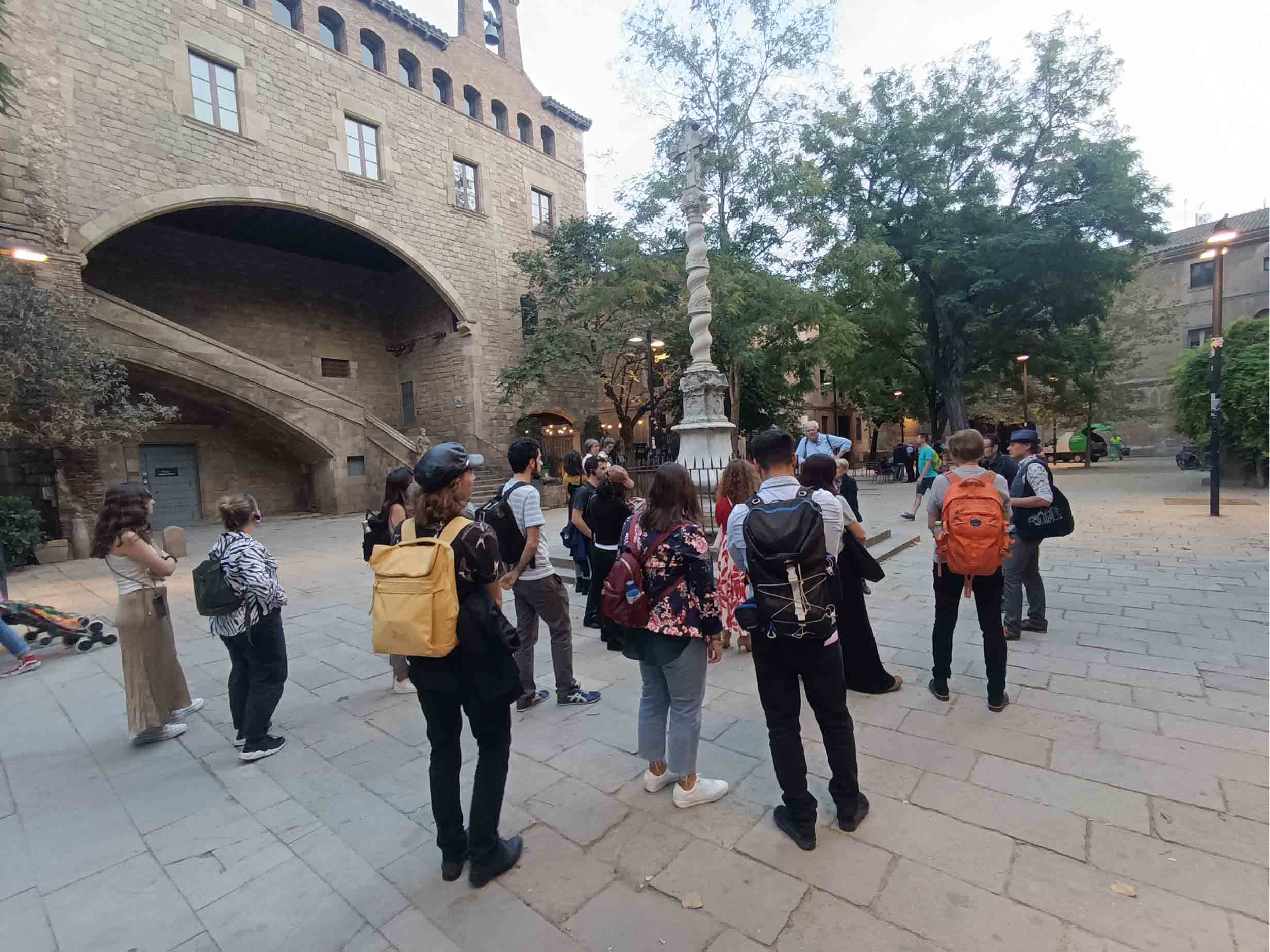
Figure 9. Tess Knighton’s presentation and sound tour through El Raval. Clockwise, from top: Tess Knighton presentation; at the court of the Library of Catalunya; bell tower of Santa Maria del Pi church


Figure 10. Group picture at the end of the conference

